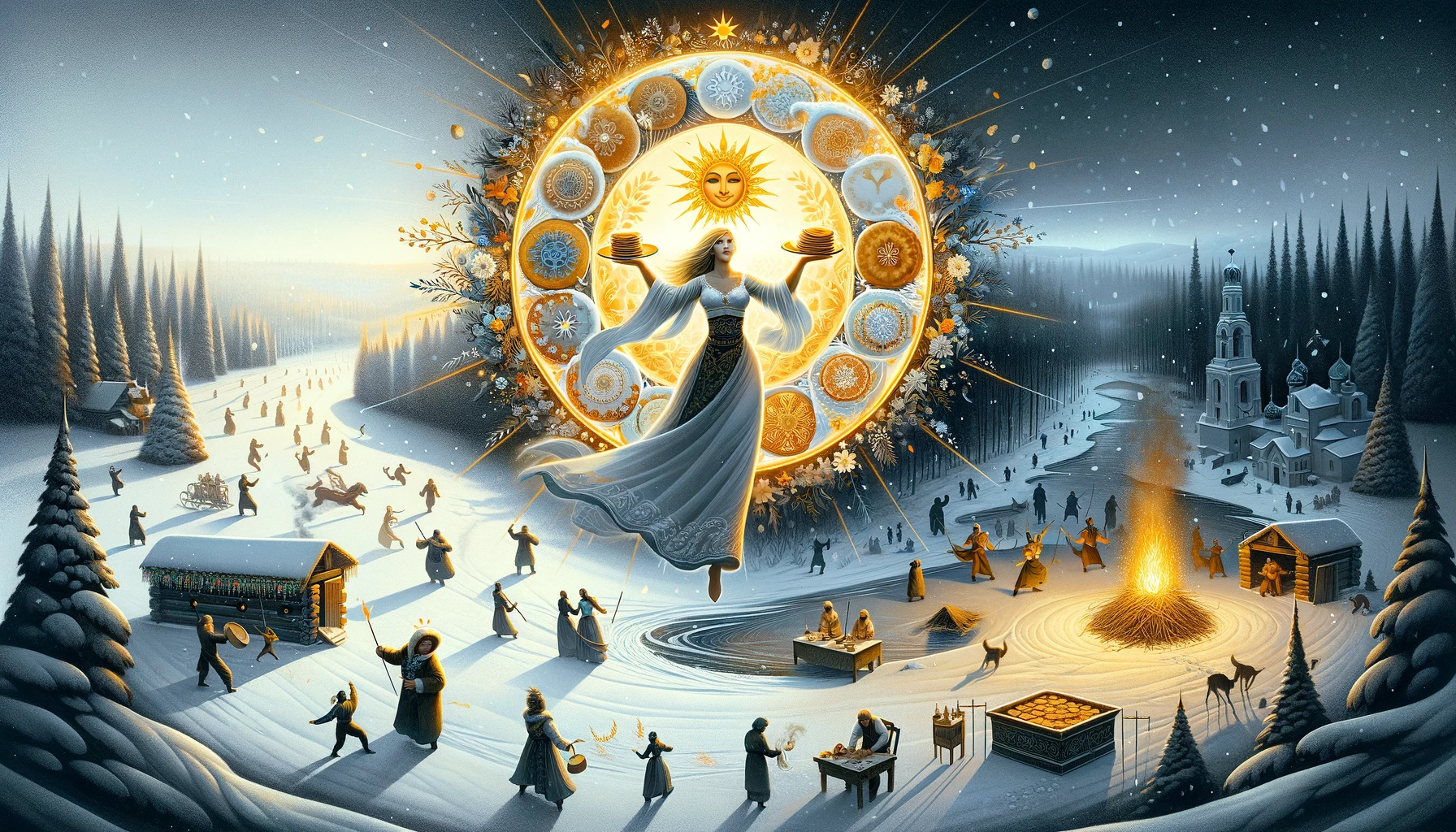many of us drift away from traditional celebrations, viewing them through a lens of contemporary skepticism or disinterest. Maslenitsa, a holiday wrapped in the warmth of pancakes and the anticipation of spring, offers a moment of pause, a week-long farewell to winter embraced by many, yet overlooked in its depth by some. This article dives into the heart of Maslenitsa, peeling back layers of history, tradition, and modern interpretation, to understand not just the holiday itself, but what it symbolizes and why it remains relevant today.
Main points:
- Historical and cultural background of Maslenitsa.
- Celebrations and their symbolism.
- Reflections on the cycle of life and death.
- Traditions as a bridge between past and present.
Key phrase: “Maslenitsa – a bridge of celebrations and reflections between the past and the present, reflecting the deep connection of humanity with nature and cultural heritage.”
Understanding Maslenitsa: A Holiday of Dual Origins
Maslenitsa, celebrated in the last week before the Great Lent, is often seen as a simple festivity marked by the joyous making and eating of pancakes. However, this perception barely scratches the surface of its rich tapestry woven from ancient pagan rites and Christian traditions. Originally a Slavic holiday, Maslenitsa heralded the end of winter and the rebirth of nature, a symbol of cyclical renewal and the eternal dance between death and rebirth.
The integration of Maslenitsa into the Christian calendar illustrates a fascinating meld of beliefs — a testament to how cultures adapt and evolve, merging traditions to find common ground. The pancakes, round and golden, symbolize the sun, drawing a line through humanity’s perennial veneration of life’s source of warmth and light. This blending of traditions speaks volumes about the resilience and adaptability of cultural practices, surviving through centuries as a testament to human spirituality and its connection to the natural world.
The Controversy of Celebration
The holiday, however, is not without its controversies. The narrative surrounding Maslenitsa carries a darker undertone, a remembrance of past atrocities such as the burnings at the stake, often associated with the Inquisition and the persecution of those deemed heretical. This aspect of Maslenitsa challenges us to reflect on the holiday’s significance, urging a deeper contemplation beyond the surface-level enjoyment of festivities.
Critics argue that celebrating Maslenitsa, given its historical connotations, is akin to glorifying a period marked by oppression and the extinguishing of countless lives in the fire of religious zealotry. This perspective invites a critical examination of how we engage with our past, the symbols we celebrate, and the memories we choose to honor. It raises essential questions about the nature of tradition and the ways in which we, as a society, reconcile with our history’s darker chapters.
Do not forget that how many psychics went to the stake only because he had the ability to heal or, in the opinion of some, was too beautiful compared to a clone/biorobot made of ordinary side bone. Usually, behind such a checker and Crook, an army of subtle - level anubists, egregors and super demons - all of whom fed on blood and fire rituals(sacrifice), still invisible to the human eye. If we are all children of the creator, why the deaths of children to him? Vb isn't that how we are served that we are all one? Makes you think. But let's continue with the topic ...

Pancakes as Symbols of Remembrance
The custom of eating pancakes, deeply rooted in the observance of Maslenitsa, carries symbolic significance that transcends mere culinary tradition. Pancakes, or blini, served as offerings for the repose of the souls of the deceased, embody a profound connection to the cycle of life and death. This tradition, placing the first pancake outside the window for the deceased, reflects a belief in the continuation of life beyond death, mirroring nature’s cycles of renewal.
This aspect of Maslenitsa offers a bridge between the joy of the present and the reverence for the past, highlighting the holiday’s role in fostering a communal memory and honoring those who have passed. It serves as a reminder that, amidst the celebration, there lies a deeper, more introspective dimension to our festivities, inviting us to reflect on the interconnectedness of joy and sorrow, life and death.
Conclusion: Embracing Complexity
Maslenitsa, with its dual heritage and complex symbolism, stands as a testament to the layered nature of cultural traditions. It challenges us to look beyond the immediate joys of celebration to acknowledge and reflect on the deeper meanings embedded within. By understanding the historical and symbolic underpinnings of Maslenitsa, we can appreciate the holiday not just as a festive farewell to winter but as a moment of collective memory, reflection, and renewal.
As we navigate the intricate tapestry of our cultural heritage, it becomes evident that our celebrations are more than just times of joy; they are opportunities to engage with our history, to honor the memories of those who came before, and to reflect on the cycles of life that connect us all. In embracing the complexity of Maslenitsa, we find not just a reason to feast, but a cause for contemplation, a bridge between past and present, and a reminder of the enduring human spirit’s capacity to find meaning in the dance of light and shadow.
